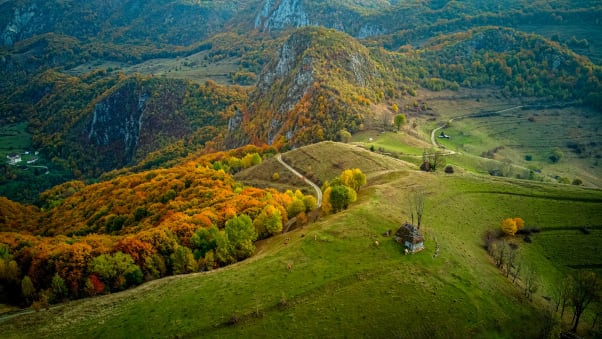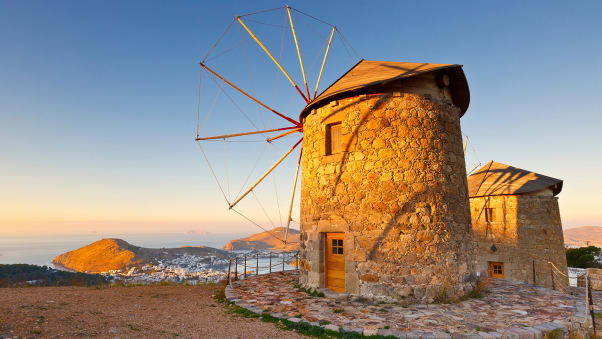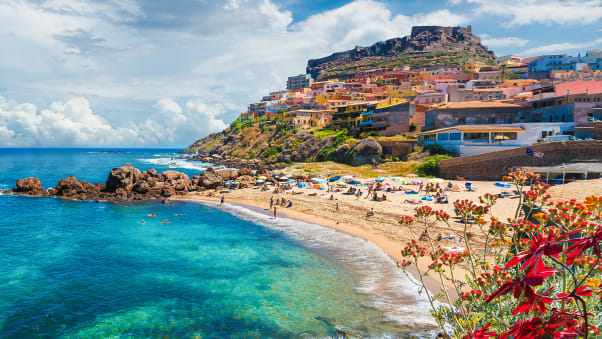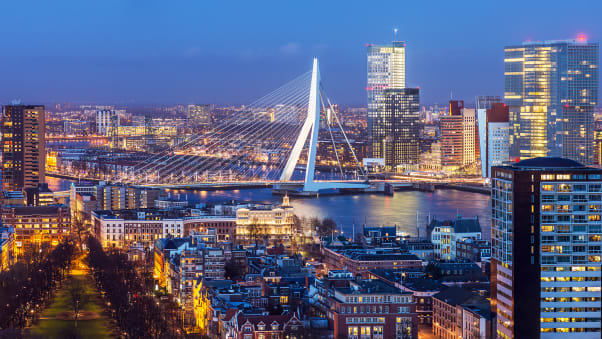(CNN) : Sure, there’s plenty of joy to be found sipping espresso outside a Parisian cafe or eating tapas in the heart of Barcelona.
But Europe is also full of so many wonderful, underrated places. Whether you want to visit historic, overlooked cities or wild mountain ranges where few tourists tread, these 21 underrated European destinations are bound to induce a serious bout of wanderlust.
Norwich, England
It’s said that Norwich has a pub for every day of the year and a church for every Sunday. Its cathedral, dating to 1096, is certainly one of the most spectacular in England, with peregrine falcons nesting on its sky-high spire. The Adam and Eve pub, just next door, first started serving ale in 1249.
From its looming castle to St. Andrew’s and Blackfriars’ Halls (a 14th-century religious complex including a friary church and convent), the city center’s medieval architecture lends the place a truly magical atmosphere.
Throw in first-rate culture, thanks to the University of East Anglia and award-winning independent Arts Center, and you’ve got a city that it would be a crime to miss when visiting the United Kingdom.
North Uist, Scotland

It takes a while to reach the wild expanse of North Uist in Scotland’s Outer Hebrides islands, one hour and 45 minutes by ferry from the Isle of Skye, to be precise. But it’s definitely worth the effort.
On the journey over, you’re sure to see seals galore, as the island off Scotland’s west coast is home to the largest breeding colony in Europe.
Every year, about 9,000 pups are born. Check out the looming Pobull Fhinn stone circle and 5,000-year-old Barpa Langass burial chamber before heading out on a sea kayak to explore the rugged coastline.
Irish Midlands
The Wild Atlantic Way, which stretches along Ireland’s west coast from Cork to Donegal, is rightly lauded for its relentless scenery and epic beauty. But away from the coast there’s a quieter, understated landscape that sees fewer visitors: the Irish Midlands.
The landlocked counties of Longford, Offaly, Westmeath and Laois offer gorgeous lakes, expansive bog lands replete with bird life, as well as the spectacular ruined monastery of Clonmacnoise. Founded by St. Ciarán in 544, its churches and crosses are some of the most historic in Ireland.
Orange, France
Avignon, just a few miles south, gets plenty of plaudits for its perfectly preserved old town Papal Palace. However, Orange is home to something just as fabulous: a Roman theater that dates back to the first century AD.
Perfectly preserved, it still plays home to an annual opera festival. When singers aren’t taking to the stage, visitors can explore the theater’s upper reaches, with huge views across town and the surrounding wine country.
Basel, Switzerland
Zurich’s wonderful lake is a summer hotspot, but Basel is an underrated Swiss gem, thanks in large part to being able to swim in the Rhine here over the summer. It’s possible to float for over two miles along this most famous of European rivers, slipping in by the Museum Tinguely and taking in the sights from a frog’s eye view.
Stuff belongings in a Wickelfisch, a trademarked “original Basel” dry bag, and it’s possible to get from A to B without having to leave valuables on the bank. Sunbathing spots and cafes mean it’s possible to make a day of this most languid of activities.
Apuseni Mountains, Romania

Part of the Western Carpathian range in Transylvania, the Apuseni Mountains are one of Europe’s most unspoiled wildernesses. Home to a large population of European brown bears, as well as wolves, its woodland and mountains feel way off the beaten track but are a short drive from the city of Cluj.
Adventurous visitors can try their hand at the numerous via ferrata, permanent climbing routes that offer amazing views of this special corner of the continent.
Zagori, Greece
Meaning “the place behind the mountains,” Zagori escaped Turkish rule and maintained its independence during the Ottoman period. Walking its myriad trails and descending the Vikos Gorge, some 900 meters (2,953 feet) deep, it’s easy to see why.
This is a wild, untamed place in northwestern mainland Greece where mountain goats hop between vertiginous platforms and lush woodland abounds. It’s not all wilderness, though. Its picture postcard villages and ancient bridges make it ideal for exploring from behind the wheel of a 4×4 or on a scooter.
Patmos, Greece

Found at the northernmost tip of the Dodecanese islands, Patmos is famed for being the place where St. John wrote the Book of Revelation. Cruise ships disgorge passengers into coaches that head to the Cave of the Apocalypse, where John is said to have received the visions that inspired his famous biblical text, before heading straight back again.
Those in the know, however, come here for a longer stay. The beaches around the main town of Skala are beautiful, with waterside tavernas serving up fresh squid and ice cold beer.
Henne Strand, Denmark
The west coast of Jutland, Denmark, has long been a go to for Danes looking for a wholesome summer holiday. Henne Strand’s wide expanse of sand, crashing waves and bracing wind make it a classic northern European getaway.
Throw in Filsø lake and easy access to the Blaabjerg Plantation, a nature reserve crisscrossed with bike trails, and Henne Strand is a true Danish icon. Foodies will love the bakeries and coffee spots, not to mention Henne Kirkeby Kro, a two-star Michelin restaurant found just inland.
Nellim and Lake Inari, Finland

The northern reaches of Finland are famed for being one of the best places in the Arctic Circle for catching a glimpse of aurora borealis, the northern lights.
But this part of Finnish Lapland, home to the Indigneous Sami people, is glorious all year round. The area around Nellim and Lake Inari is remote and wild, perfect for kayaking, camping and swimming. The fall colors here are some of the most stunning in the world.
Antwerp, Belgium
Brussels and Bruges get plenty of attention from tourists. But Antwerp more than rivals its fellow Belgian cities. One of the most vital trading posts in Europe during the 15th and 16th centuries, it remains the center of the world diamond trade.
Its towering Cathedral of Our Lady, completed in 1521, is home to work by Rubens, and the superb Red Star Line Museum, housed in a former shipping office, tells the story of the millions of people who came through Antwerp in the 19th and early 20th centuries, leaving persecution in search of a better life in America.
Wiesbaden, Germany

Home to 26 thermal spas, Wiesbaden was in the business of wellness long before it became a 21st-century travel trend. This pretty town, though, isn’t just about soothing aching joints and rest and recuperation. It’s also known for its sekt, sparkling wine made in the lush surrounding countryside.
Connoisseurs claim it’s every bit as good as Champagne. Nearby Schloss Vollrads has been producing wine since the late 1100s and makes for a relaxing stop off on a dedicated wine tour.
Picos de Europa, Spain
The majestic Picos de Europa in northern Spain serve up some of Spain’s most beguiling scenery. Oak and beech trees crowd the lower reaches of this mountain range, where soaring, jagged peaks ascend toward the heavens.
Its 30 self-guided routes are rich reward for hikers, with few encounters with other humans likely and the chance to spot Iberian wolves and brown bears. Spain’s only human inhabited nature reserve, the 11 villages here offer a glimpse into a simpler, rural life.
Sardinia, Italy

Any trip to Italy must put food front and center. And that’s especially true of the island of Sardinia, which blends Italian culture with Catalan, North African and French flavors.
Seafood, inevitably, is a big deal along the coast, with clams, sardines and sea urchins abounding. Goat and lamb, grilled over open flames, are a delicacy, as is maialino arrosto, suckling pig made with myrtle and juniper. Visitors should also try panadas, Sardinian pies that herald from the village of Assemini. Gnocchi, such as malloreddus flavored with saffron, is another essential dish.
Vilnius, Lithuania
There’s so much to love about the Baltic states of Latvia, Estonia and Lithuania. But the latter’s capital, found inland rather than on the coast like the Latvian capital Riga and Estonia’s Tallinn, can often get overlooked. And that’s a real shame, as this is a truly wonderful city.
The baroque architecture on show is some of the finest in Europe, while the cathedral in the heart of town draws its origins back to the 13th century. There’s a warm, welcoming and energetic vibe here, thanks in no small part to the buzzing student population. Grab a beer and soak it all up.
Rotterdam, Netherlands

Amsterdam has been at the center of an overtourism crisis for years. And while the Dutch capital is undoubtedly beautiful, Rotterdam is a fascinating alternative.
This industrial city has one of Europe’s most thriving food scenes. Katendrecht, a former red light district on a quay in the city center, has a great array of options, from gourmet burgers to the best tacos this side of the Atlantic.
The Deliplein plaza has more than 20 restaurants and bars, serving everything from steak to Thai curry, while the nearby Fenix Food Factory is the place to pick up local produce and sample delicious ciders with small plates.
Kalmar, Sweden
Sweden’s vastness means it can be hard to decide where to stop and take it all in. Kalmar is a great option. This historic city on the country’s southeast coast not only has one of the most beautiful castles in Scandinavia but is also ideal for those keen on outdoor adventure.
The 200-kilometer (124-mile) Kalmarsundsleden trail is perfect for exploring by foot or on two wheels, while the beaches on the surrounding islands are heaven in high summer. Throw in Swedish cinnamon buns and classic dishes at the fancy Postgatan restaurant, and you’ve got the makings of a dream vacation.
Białowieża National Park, Poland
Visitors to Poland tend to make for the bright lights of Warsaw and Krakow. Yet in the far east of the country, Białowieża National Park is waiting to be explored.
The park has enjoyed protected status for over 100 years and is home to the largest population of European bison on the continent. It’s the best-preserved part of the wider Białowieża Forest, ancient woodland that has fast disappeared in recent centuries. For nature lovers, this is an escape that’s not to be missed.
Pristina, Kosovo
The Balkans have so much to recommend them, from wild islands along the Dalmatian coast to challenging hikes across its mountain ranges. And the Kosovan capital, Pristina, is hugely underrated.
It has a booming cafe culture, serving up coffee that would make the finest Aussie baristas proud. Soma Book Station stands out from the crowd. Meanwhile, the vast swimming pool in Germia Park is a hip hangout during the summer.
Pula, Croatia

Dubrovnik’s beauty can sometimes be offset by the hordes that crowd its ancient walls. But farther north, Croatia has another beautiful city which doesn’t feel overrun.
Pula, on the Istrian peninsula, has sweeping views over the Adriatic as well as Roman ruins at every turn and spectacular beaches. The cuisine takes its cues from Italy (of which Istria was part until 1947) and the local wine is to die for.
Bansko, Bulgaria
Skiing in the Alps, whether in France, Switzerland or Austria, can be a brilliant yet punishingly expensive business. That’s where Bansko comes in. The largest skiing area in Bulgaria, it has some of the best winter sports action in Europe and passes for the pistes that don’t leave bank balances depleted.
The snow here is great, and the après ski action more than matches that of classic resorts in Western Europe.






